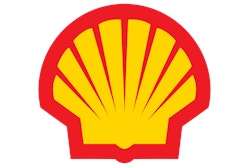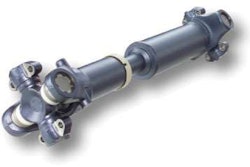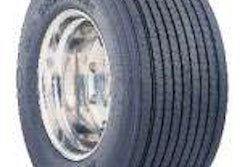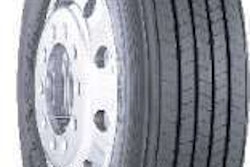Is it Wise to Synthesize?
In a bid to extend drain intervals and improve fuel economy, synthetic engine oils may be part of the solution.
As slick as it might appear, a mineral-based engine oil offers some pretty rough terrain at a microscopic level. The different lengths and sizes of its molecular chains tend to look downright jagged when compared to the uniform spheres that would be seen when peering deep into the depths of a synthetic oil.

The differences are not only skin deep.
The chemical make-up of a synthetic formula allows it to resist oxidation, making the oil an attractive option for those who need a longer-lasting fluid to support extended- drain intervals, or for those who are pushing engines at high temperatures and high loads over an extended period of time. The oils also pump more freely in cold temperatures and basically offer measurably better viscosity at extreme temperatures of any sort.
But it is the promise of fuel economy improvements that may be capturing the imagination of a wider group of users. Suppliers tend to refer to potential fuel economy gains of at least 1 percent thanks to the reduced friction, and the performance is even better when coupled with synthetic gear oil. That can be welcome news for fleets that are trying to reclaim some of the fuel economy which was lost with the onset of exhaust-cleaning equipment mandated by the U.S. Environmental Protection Agency.
Shell, for example, reported a fuel economy gain of 1.6 percent after running six test trucks around a track to measure the impact of various options. And last November, Valvoline introduced its “fuel proof” guarantee that promised a positive return on the investment, even after factoring in the higher price of the synthetic lubricants.
VISCOSITY VARIABLES
The gains are largely realized with the combination of the right viscosity to protect engine components, and a low viscosity that makes the oil easy to pump and minimizes pumping losses.
“In most cases, synthetics are a lower viscosity product,” notes Dan Arcy, OEM technical manager for Shell. “If you were to make a 15-40 synthetic, you wouldn’t really be getting any advantage of low-temperature [properties]. The benefit comes from making the wider viscosity range.” Instead of using a 15W-40, the grade that currently dominates the trucking market, the availability of synthetics can move a truck owner to a 5W-40, which pumps more freely at lower temperatures. That leads to easier starts at lower temperatures, protecting batteries and starters in the process.
Of course, any choice is somewhat dictated by the equipment being lubricated. Some engine manufacturers, for example, still prefer to use a 10W-40 instead of a 10W-30.
These formulas may play a role as regulators look to establish the industry’s first fuel economy standards for trucks. Other factors will certainly be involved, but some of the required gains could be addressed by filling reservoirs with synthetic oils before equipment ever leaves the factory. That already is happening in Europe.
All of the potential values aside, North America’s truck fleets have been relatively slow to go with the synthetic flow. Estimates vary, but most producers suggest that synthetic formulas account for about 5 percent of the market for engine oils. That might have as much to do with price as anything else. As a general rule, full synthetics are about double the price of their mineral- based counterparts. The cost of a “semi-synthetic” blend tends to fall somewhere between the price of these two options.
The acceptance is marginally better among the owners of passenger vehicles. There, the synthetic oils account for about 10 percent of the market, says Peter Thomson, director of commercial and industrial marketing for Valvoline. The owners of diesel pickup trucks have been some of the quickest adopters.
But the formulas are gaining ground in the commercial market as well, he insists. “It is growing rapidly, really pushed by fuel efficiency.”
Once synthetic blends are considered, the options may represent 8 to 9 percent of engine oil sales, notes Mark Reed, global brand manager for Shell Rotella, but even he admits there is still “a long, long way to go.”
The slow acceptance might be little surprise to Len Badal, commercial enterprise manager with Chevron Global Lubricants.
“In most normal engine operations, synthetics show limited benefit compared to their costs – actually engine oil formulation between the additives and base oil [such as Group 2 base oils and premium additive chemistry] is much more critical in providing superior performance to engine lubrication in severe applications,” Badal says.“Today, Group 1 and 2-plus conventional base oils can provide similar or even superior oxidation stability and soot handling capabilities than synthetics in a majority of applications…Synthetics tend to show the best performance against older Group 1 base oils in terms of oxidation performance but have limited performance benefits against hydrocracked Group 2 base oils.”
Synthetic oils account for about 5 percent of the total market.
The chemical foundations of the synthetic formulas can vary from one product line to the next. A “synthetic” oil can be built on a foundation of highly refined and processed Group 3 mineral oils, a Group 4 engineered PAO [polyalphaolefin] made from natural gas, or the chemical esters of Group 5. Granted, the latter category is largely too expensive for a trucking application, Thomson says. “All three of these types of base oils are very chemically stable and have a high oxidation resistance.”
The main difference between a Group 3 or Group 4 base stock usually comes in the form of cold flow characteristics.
ADDITIVE ADVANTAGES
The base stock is also only part of the chemical mix. While it represents about 75 percent of the offering, the rest comes in the form of additives. “It’s not like you can take an additive system you use in a mineral oil and put it in a synthetic,” Arcy observes. “You want to formulate to take advantage of the [resistance to] oxidation.”
Of course, there are some cases where synthetic lubricants just wouldn’t make economic sense. Arcy, for example, refers to trucks that he saw hauling sand around Galveston, Texas, during Hurricane Ike. The axles were under water, so they obviously wouldn’t be taking advantage of a 500,000 mile drain interval there. “Had I been called to recommend a product, I probably would have recommended a mineral oil,” he says. “For them, it wouldn’t be worth the expense.”
“If the limiting factor is something other than oxidation resistance, then synthetics may not be the products to use,” Thomson agrees. “We just have to give the consumer the word of warning to be sure they are going to see the benefits to justify the cost.”
The desire to extend lubrication intervals also needs to consider the timing of other maintenance schedules. Sure, the synthetic oil might last longer, but the timing of other maintenance demands might require the truck to return to a service bay before the oil comes to the end of its life or even requires an oil analysis. “Does that fit with all the other things you need to do to maintain that truck?” Arcy asks.
In cases like this, a semi-synthetic formula might be best, Kwon agrees. It will offer some of the potential benefits at a fraction of the cost.
Still, there are clear cases for synthetics in some applications. The cold-flowing properties, for example, make synthetic oils a superior choice for a piece of equipment expected to operate in extreme weather. “They really appeal to the use or operating conditions of an APU,” says Arcy, referring to auxiliary power units. And it certainly will help in the colder conditions that are only a few months away. “When we say better [performance] in low temperatures, there is definitely a difference in the pour point.”
Fleets appear to be the most accepting of the technology wherever it is used in a commercial truck. After all, an owner-operator who is already realizing more than one million miles out of an engine may be reluctant to fix something that hardly appears to be broken.
“They say why would I risk it?” Reed asks, referring to the questions that are posed when synthetic options are discussed. They may see oil as a cheap form of insurance, draining the sump somewhere between 13,000 and 15,000 miles. In contrast, fleets are more likely to ask the oil to last 20,000 to 25,000 miles or even more, perhaps because they are likely to trade in the equipment more quickly.
Equally, he suggests that owner-operators may be slower to adopt the semi-synthetics that are also growing in popularity. Their response in many cases is: “I don’t want to be halfway in this thing. If I’m going to change, I’m going to go all the way.”
SELLING BENEFITS
In the face of a reluctant user, it may be up to personnel in a shop to stress the benefits.
“A successful area for jobbers to focus with premium products sales is around total cost of ownership savings. Whether the products are blended with synthetics or not, but have premium technology, they can focus on meeting customers’ performance criteria around fuel economy, extended drains to help show reduced operating spend,” Badal says.
Engine manufacturers ultimately could play a role in the process. Reed points out the way that synthetic gear oils surged in popularity after Eaton began to include the fluids as a way to extend warranties.
As OEMs look to improve fuel economy, they will be designing engines around the lighter viscosity products, Thomson insists.
Synthetics offer the best opportunity to improve fuel economy and emissions, and shift to the lighter weights of oil, Reed agrees. “The industry will change over time. I know Mercedes-Benz is inquiring about a 5-30 full synthetic.”
The chemistry itself continues to evolve as well. “The future in synthetic technology points towards gas-to-liquids synthetic base oils that are processed from natural gas and will have very similar characteristics to PAOs at potentially lower cost,” Badal says. But regardless of the form these formulas take, you can expect to see more of them in the future.
“Globally there will be a meeting of the minds of some of this technology down the road,” Reed muses, referring to the wider use of synthetics in European trucks. “The future is definitely bright on synthetics.” n









